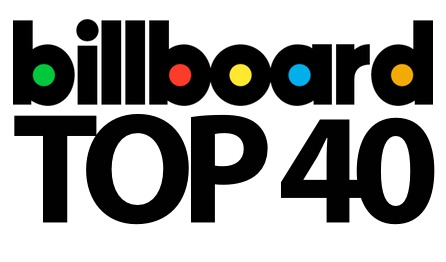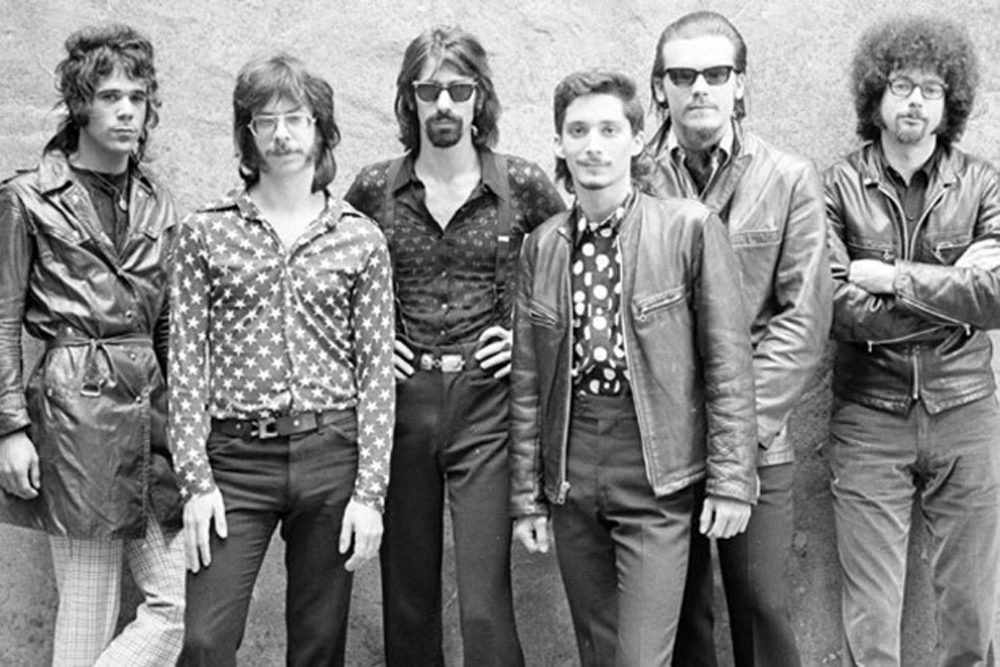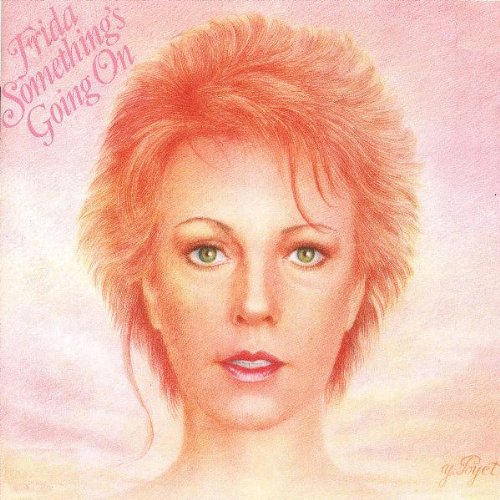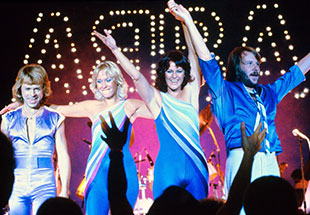
Back in the day when singles ruled the world, there was something called “Top 40 Radio” – a place where the most popular songs in the nation were played. But not ALL the songs – only the most popular forty (both past and present). Why forty was the number that the powers that be settled on as the number is beyond the scope of most normal people. And out of my paygrade as well. (Though I’m sure the mighty Wikipedia has the answer.)

One old rumor is that jukeboxes could only hold 40 singles – so that’s a reasonable answer. Or maybe the mobsters who controlled the jukebox market couldn’t count past 40. Whatever the reason, it’s about a radio format – what singles (those are 45s, which are the 7″ records that play at 45 RPM and had one song on each side) – anybody who remembers Casey Kasem knows what Top 40 means.
So, really, a song that is in the Top 40 is a “hit single,” and that’s a big deal apparently. But there is this barrier, a line drawn in the sand, if you will, that divides the Top 40 from the bottom 60. Now, to be fair, the “Bottom 60” contains songs that have dropped out of the Top 40 and songs that are climbing up to the Top 40 (along with plenty of others that never hit the Top 40).
But once you’re in the club, you’re in, even if you only hit the bottom rung of the charts. Don’t worry, there are plenty of classic tunes that have peaked at #40 on the Billboard Hot 100 Chart. These include:
- Breakdown – Tom Petty and the Heartbreakers
- I’d Love to Change the World – Ten Years After
- All I Really Want To Do – The Byrds
- Burnin’ For You – Blue Öyster Cult
- Strung Out – Steve Perry
- Video Killed The Radio Star – The Buggles
- Don’t Tell Me You Love Me – Night Ranger
* Among many others.
But back in the summer of 1982, three AOR (Album Oriented Rock) bands released singles that peaked at #40. Of course, airplay on FM stations allowed these songs to chart higher on other charts, such as the Mainstream Rock chart, so they got more airplay then their lowly chart position indicated. Anyhoo, here are three singles that peaked at the bottom of the hit charts in 1982!
J. Geils Band – Angel In Blue

The J. Geils Band was a strange beast in the world of rock. Starting out as a blues purist’s wet dream, they released a couple of smoking albums early on, popped a few hit singles on the charts and toured like crazy. They certainly had their ups and downs, but by the time the late 1970s came around, it looked like their time was up.
But never count a hard-working band from Boston out. The band shifted to a more contemporary sound (no doubt annoying their old time fans) which brought them a wide fanbase and yes, hit singles. The albums Sanctuary (1978) and Love Stinks (1980) were respectable, if not entirely decent successes, but nobody could predict what the band would release in late 1981. Freeze Frame (a #1 album in its own right) contained the band’s biggest hit, the #1 single “Centerfold” (one of the defining hits of the 1980s) and its follow up, the #4 title track.
The third single released, “Angel In Blue,” tells the story of a “tabletop dancer” who is used and abused by all the men who pass through her life. A sleeper hit and a seldom-seen video, it barely charted in the Top 40, yet was a hit on AOR radio. But oddly enough, it was The J. Geils Band’s last studio Top 40 hit – later in the year, the band released their third live album (and final album overall with vocalist Peter Wolf) with their final hit single, “I Do.”
Despite the success of Freeze Frame, the band fractured – vocalist Peter Wolf wanted to continue the style of music the band the made since the late 1960s, while keyboardist Seth Justman (acting as a proxy for the other four members) wanted to carry on more as a slickly-produced pop band. Sadly, the band broke up the following year and the Wolf-less Geils band issued one more barely-released album, while Peter Wolf started a well-received, if not commercially overwhelming received solo career.
Rainbow – Stone Cold

Rainbow, along with Whitesnake, was one of the successful spinoff groups from the juggernaut Deep Purple. Formed by crabby-ass guitarist RItchie Blackmore, the band’s 1975 album Ritchie Blackmore’s Rainbow became an instant hit with fans of the guitarist. Blackmore commandeered the band Elf, kicked its guitarist to the curb and used the rest of band for the album, “used” being the operative word here. Once it was recorded, he jettisoned the other players, with the exception of vocalist Ronnie James Dio and stocked the band with a combination of veteran players and unknown hotshots.
Unfortunately, Blackmore’s forte wasn’t harmony among band members, and throughout the course of Rainbow’s original seven album run, the band went through three vocalists, five bassists, five keyboard players and four drummers. And one guitarist. You tell me who was calling the shots there…
Talk to any of the purists, and they’ll tell you that the vocalists got duller as time went on, and that Ronnie James Dio was the only “real” vocalist of Rainbow. But “melodic rock” fans will side with number three, Joe Lynn Turner. (Wow, both these guys have THREE names!) Maybe that’s why Graham Bonnet only lasted for one album in the band. Or maybe because he looked more like Joe Jackson’s drummer than the lead vocalist in a serious hard rock slash heavy metal band.
Whatever. By the time album number six, Straight Between The Eyes dropped n 1982, Joe Lynn Turner was firmly ensconced as the voice of the band. Blackmore had his eye on the radio, and with the single “Stone Cold,” he got his wish. Somebody has to be #40, and 40 turned out to be Rainbow’s lucky number, as it became the band’s biggest hit, peaking at #40. (But “Stone Cold” did top the U.S. Mainstream Rock Tracks chart.) But time wasn’t on the band’s side – one more moderate hit album followed (1983’s Bent Out Of Shape), and in 1984, Deep Purple Mark II reunited, and that was it for Rainbow. (Yes, Blackmore resurrected the band after he quit Purple in the 1990s, but with a bunch of new scabs and no former members.)
Genesis – Man On The Corner

Everybody knows the story of Genesis – the public schoolboy founding, the prog years, the exodus of original front man Peter Gabriel and the anointing of wallflower drummer Phil Collins as new vocalist, the defection of guitarist wunderkind Steve Hackett and all that. Once all those minor nuisances were settled, the band hit the big time and went on a hot streak that lasted for a decade and a half.
One small issue hit the band in late 1978 – Phil’s wife Andrea (women named Andrea tend to be trouble!) called B.S. on his touring schedule. It was either her or the band, and despite the old college try on his part (though I haven’t heard her side of the story), it ended badly and our boy wrote a batch of songs about the situation. One of these (“Misunderstanding”) became a hit from Genesis’ 1980 Duke album; the rest became the bulk of Phil’s hit debut LP, Face Value.
But there was one more for the world to hear. Single number four from Genesis’ 1981 album, ABACAB was the sparse “Man On The Corner.” Similar in to Phil’s “In The Air Tonight” (but without the classic drum fill), “Man” was the tale of a lonely man waiting for something that never came. But unlike J. Geils Band and Rainbow, there were hits in the future for Genesis. Plenty of them, as a matter of fact. The next four albums (three studio and one live) netted the band hit singles galore, including FIVE top five hits from 1986’s Invisible Touch, and one them hit #1, the title track. We can’t dance, indeed!


